You head to the store to purchase the almonds called for in your recipe, but when you arrive, you realize that buying almonds isn't as simple as grabbing a bag off the shelf. You face a multitude of almond choices, including blanched and unblanched almonds. Your recipe should have specified which type to use, but you can always blanch your own if necessary.
The Skin
Almonds grow in a shell that leaves a residue of skin on the outside of the meat. When the skin is removed, in a process called blanching, the result is a skinless, white almond. Don't confuse blanched almonds with natural almonds. Natural almonds are those that have not been roasted or salted, but still have the skin.
The Blanching Process
Blanch almonds by immersing the nuts in boiling water and then rubbing off the skin. You can do this at home, by placing the nuts in a bowl and pouring hot water over them. After they sit for several minutes and the water cools, slip off the skins. They will probably be too waterlogged to use in a recipe immediately, so you'll have to first toast them in a 350-degree Fahrenheit oven for 2 to 3 minutes, or until golden. If you aren't planning on using them immediately, let them dry on their own.
Using Your Almonds
Blanched almonds make a lovely garnish for platters and sweets. If you are baking a cake, cookie or pastry in which an even, light color is desirable, you'll want to use blanched almonds. Stir-fries and pilafs often call for blanched almonds because the skin may separate from the nut as the dish cooks, leaving husk residues in your recipe. Unblanched almonds are better for snacking because the skin contributes to the toasty flavor of almonds. A study in a 2005 issue of the "Journal of Nutrition" found that almond skins contain important flavonoids that act as antioxidants in the body -- fighting free radicals responsible for disease and aging -- helping to make unblanched almonds a healthy addition to your diet.
Forms for Purchase
You can find blanched and unblanched almonds in similar forms. They both come whole, slivered, sliced, halved, chopped and ground into flour. Almonds may also be pulverized into butter. Blanched almond butter is most appropriate for light-colored confections and baked goods.
Related Articles
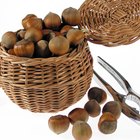
How to Eat Hazelnuts

Can I Substitute Ground Almonds for ...
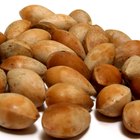
How to Cook With Ginkgo Nuts
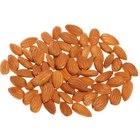
How to Cook Raw Almonds
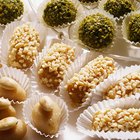
The Shelf Life of Almond Paste

Substitute for Peanut Satay Sauce
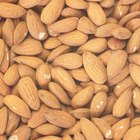
How to Grind Almonds for Baking
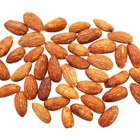
How to Shell Fresh Almonds

How to Grind Almonds for Baking

How to Make Sugared Almonds
How to Roast Raw Cashews
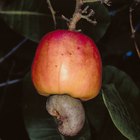
What Is the Difference Between Raw & ...
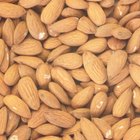
Types Of Almonds

How to Dry-Roast Hazelnuts
Do Almonds Ever Go Bad?

Can You Use Beet Powder for Cupcakes?

Differences Between Roasted & Raw Nut ...
Almonds Sliced vs. Slivered

Do You Soak Raw Peanuts in Water Before ...

Vegan Alternatives to Lanolin in ...
References
Writer Bio
Andrea Cespedes is a professionally trained chef who has focused studies in nutrition. With more than 20 years of experience in the fitness industry, she coaches cycling and running and teaches Pilates and yoga. She is an American Council on Exercise-certified personal trainer, RYT-200 and has degrees from Princeton and Columbia University.